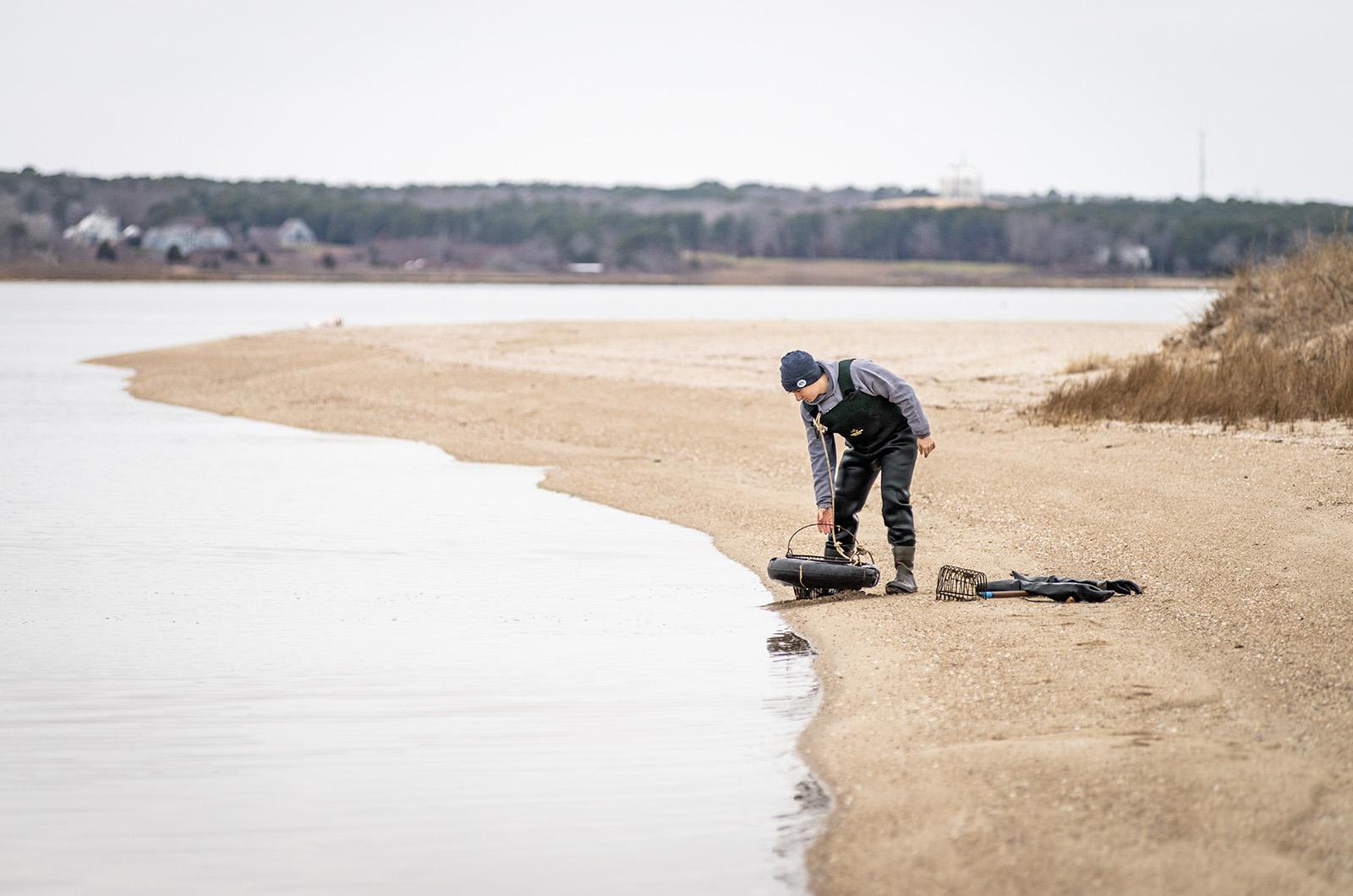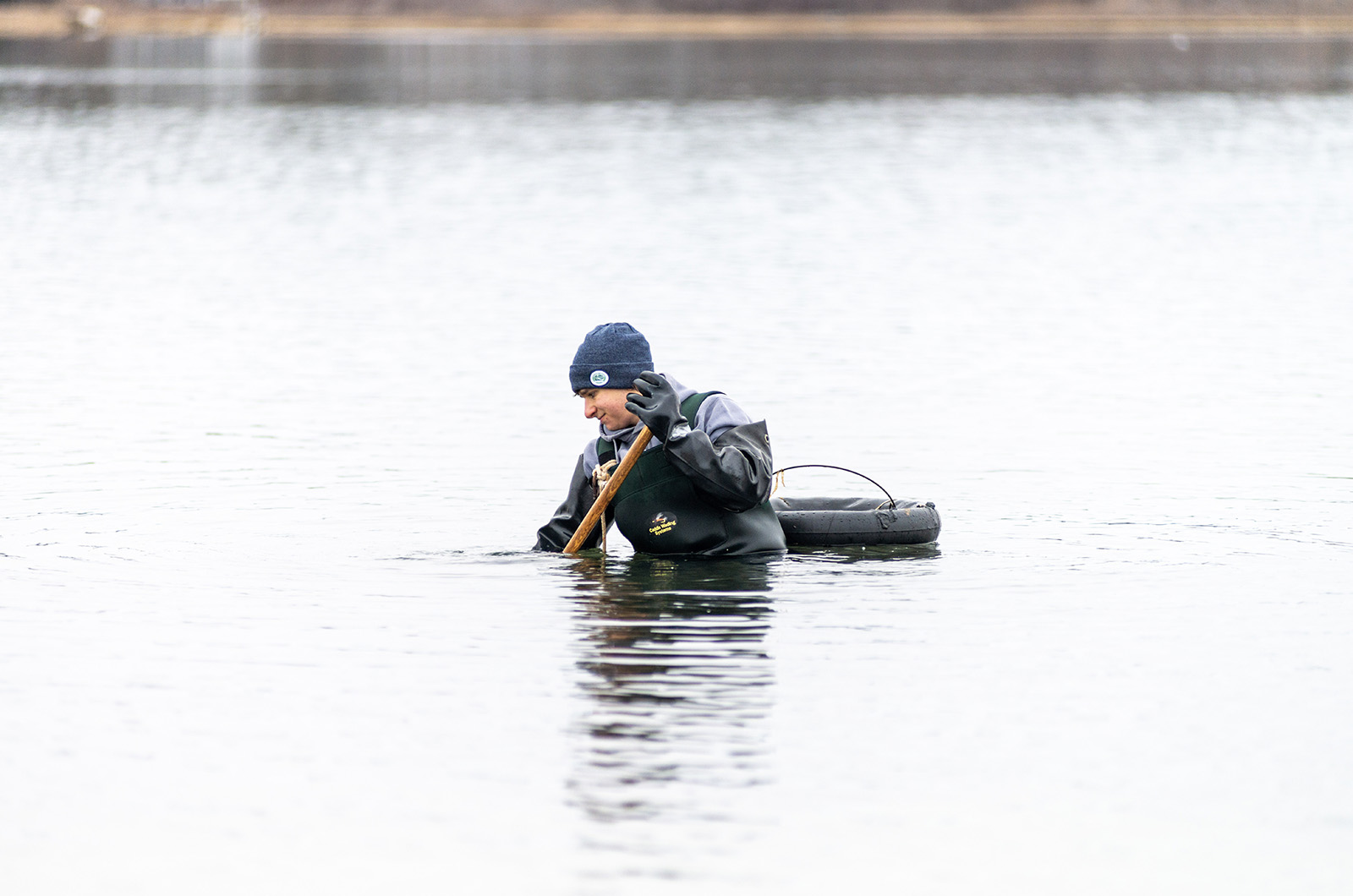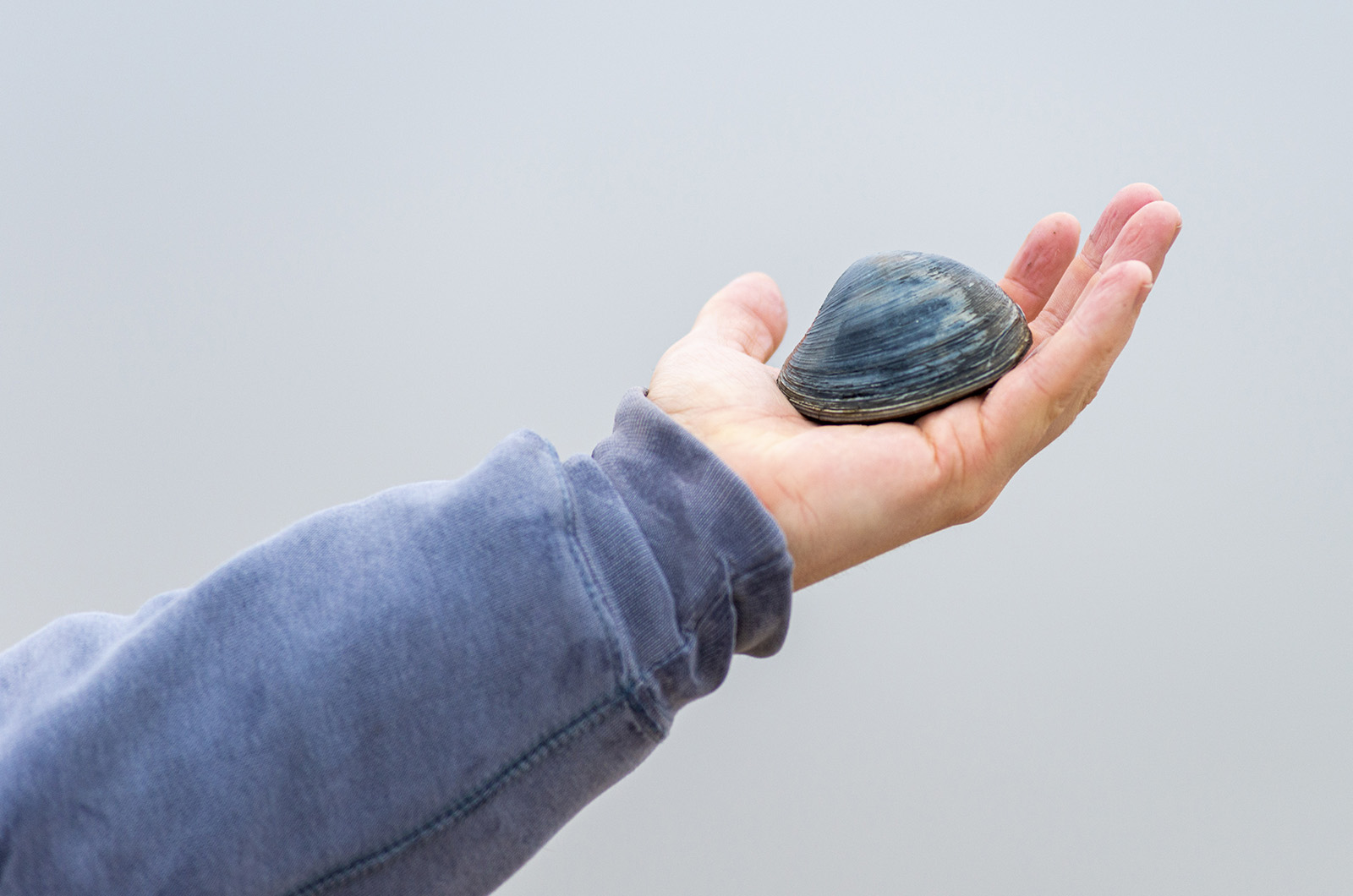Every Sunday morning, I roll out of bed at a slovenly hour, lazily make my coffee and crack a few eggs into my pan. I then deposit myself unto the couch, and promptly proceed to do nothing.
It has always felt wrong. Who am I to sit in idle gluttony, to eat of a bounty towards which I put no toil?
Like most modern Americans, the work I do and the food I eat have very little to do with each other. I live in a state inconceivable to the millions who came before me, who worked the land and fished the sea to put food on their plates.
So, on a recent Sunday morning, early in the a.m., I submerged myself in Sengie and raked myself some clams, an attempt to rekindle the tripartite relationship between muscle, mind and stomach.
I would not eat anything that morning that I had not secured myself.
The first step was to suit up. When you are resolved to take a dip in an icy winter pond, layers are the keyword: first sweats, then pants, then thick Lycra waders up to the chest. Where the rubber boots met fabric, my pants kept bunching up, a constant bugbear for the rest of the morning.
On my upper half, I wore four shirts of varying thickness and a pair of sturdy, elbow-length rubber gloves. I felt thoroughly bundled up.
Indeed, I never felt a touch of cold as I was clamming that morning, even as the temperature dipped into the thirties. Of course, I also had the warmth of comradery to fend of those winter winds, as I had dragged out Gazette photographer and genuine Islander Ray Ewing out early to show me the ropes.
“It’s a bit like searching for treasure,” he told me, as we sloshed our way into the pond, clamming rakes in hand. Attached to our waders by stretches of rope, two floating bushels followed close behind us, mine (borrowed) was equipped with an inflated inner tube, his with a bright yellow pool noodle.
As soon as we entered the water, Ray’s eyes darted down, looking out for the oysters on the way to deeper clamming waters. He found one, a monstrous and slimy thing, shingled in slipper snails.
But the oyster was just an appetizer. Next up was the main course.
Before you can dig for clams, you first must find them.
“Take your rake,” Ray told me, “and kind of gently rake the tines [prongs] into the sand.”
Once you hit something hard, it’s time to dig, to piece the thick gray-brown muck in which the quahogs dwell.
Gravity works differently underwater and everything moves more slowly. It poses a particular challenge for digging — unlike on the surface, you cannot count on your bodyweight to leverage the rake into the mud.
Even as you struggle to jiggle your rake into the muck, the first time you bring up a clam is exhilarating. It truly feels like a little treasure, a deep gray-blue, glistening, that plops and clatters as you drop it in the bushel.
Once you get a feel for it and find a spot with a good spot (often called a “honey hole”), the rhythm of clamming comes easy. Drag, stop, shimmy, left, right, down, push, scoop, shake, surface, examine, dump.
Repeat.
Before I knew it, I had at least two dozen clams, plenty to fulfill my Sunday hunger.
When I got home I cracked one open. Inside, dark gray gave way to brilliant purple and white, wampum. The clam was worth the effort, cold, maritime and sweet.







Comments (3)
Comments
Comment policy »